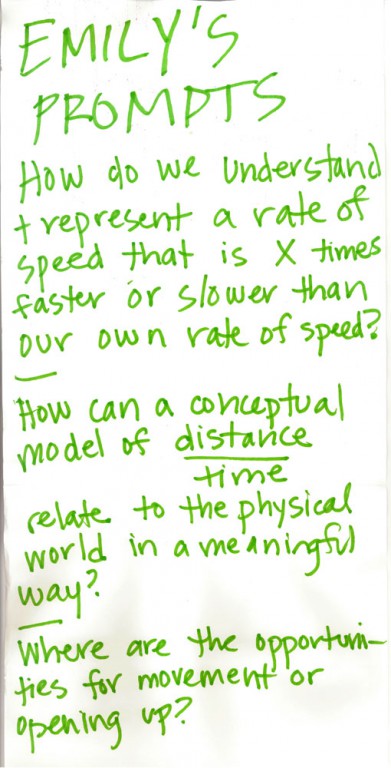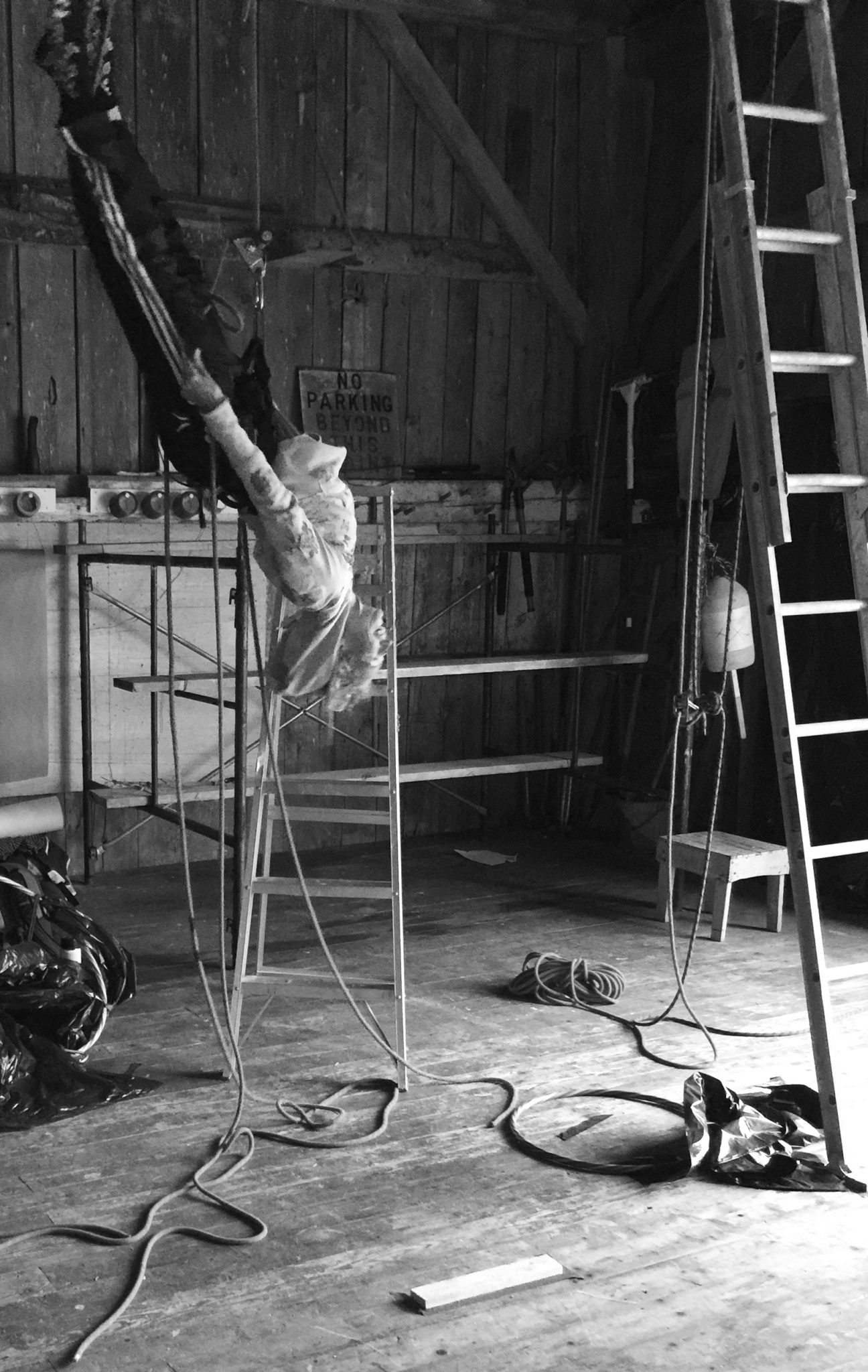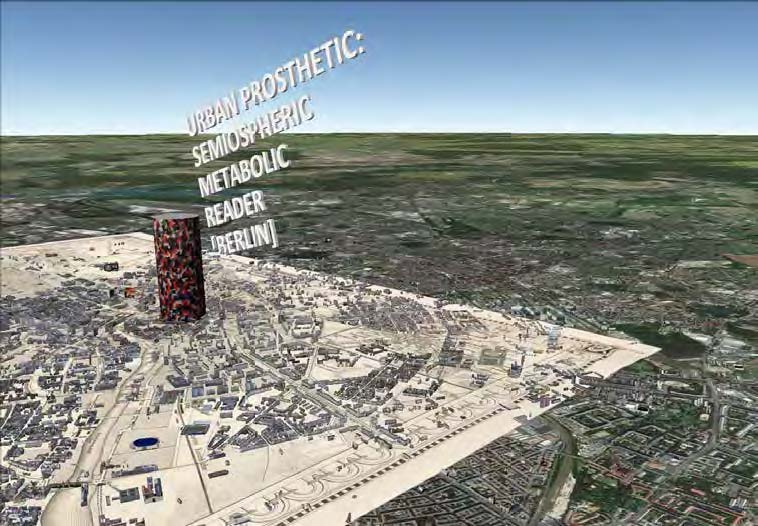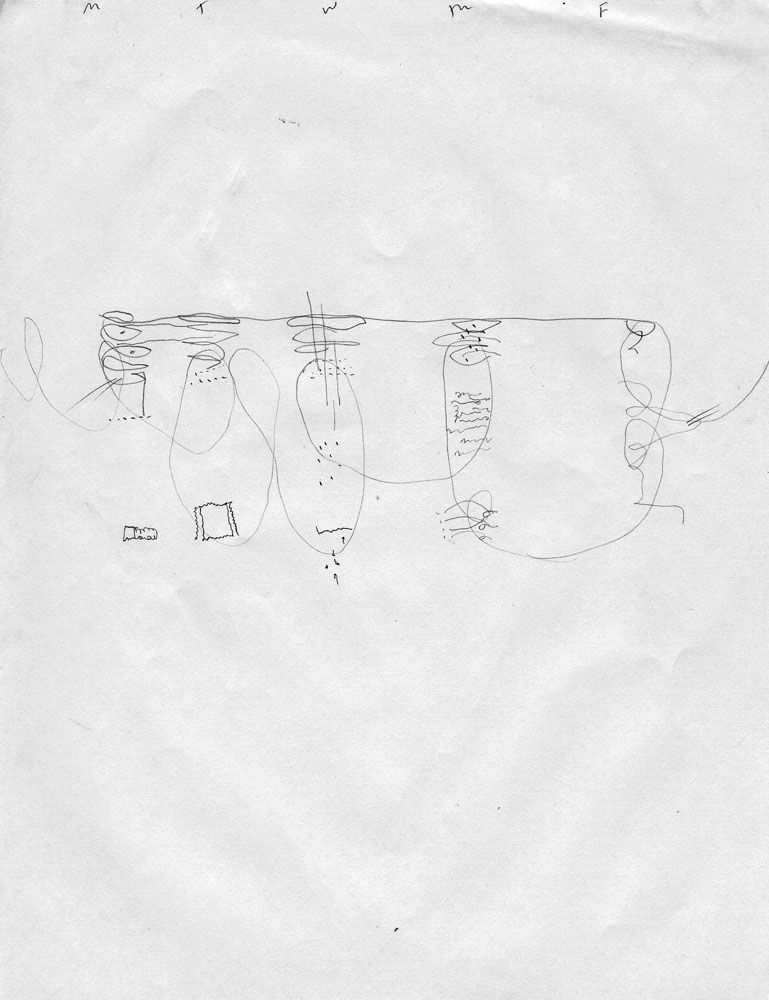PAST<<(((?)))>>FUTURE Lindsey Culpepper
I am still convinced that various mappings that reflected present time and the speed of time became the theme of FastForward. This investigation of immediate physicality to time was infused throughout the week and, given Peter’s and my prompt, it’s what I noticed. Even when the work referenced ‘future’, it was with the ‘critical distance’ of the present to review, curate, and expand upon. Anita’s ‘I Dream of an Eighth Day’; Gail’s strategies for a ‘Daily Practice League, or ‘Slow Lab’; Blakes very applicable time-distance tampering with the use of technology for a task; Andrew’s Civility & Speed; Audra’s Memorializing Loss; Emily’s On the Fly; Amy’s Durability; Gabrielle’s History of the Immediate Future; and my Just Keep Drawing; grounded the work of the week in a hyper awareness of relationships to notations of the present. Being critical, being central, being taken by Denise’s off-the-cuff remark as she untangled a thin cassette tape in the wind: “see: this is where I try to control.” Boom. That could have been a great title for the week. Peter and I prompted to ‘rethink of time’. The inquiry became this rethink in a very verb sense and in a linear, non-end-point way; weaving 10 minute exposures of the basement-camera-obscura with FastForward images of touch-screen faces. In the months since the >>FastForward>> immersion, I’ve tried to be, play, and stay naive with time, design an eighth day, and notice in my design process where “see: this is where I try to control”. Margo Halverson
While still on the island, the idea and practice of “slow-forward,” a state of being and daily devotion to one’s lifework, seemed (and was) feasible. The difficulty is always trying to figure out how to hang onto an ideal practice once home and yanked back into hectic daily schedules and deadlines. I envisioned some sort of magical flurry of calming snowflakes generated from the FF experience would float quietly over all and douse the frenzy.Of course, this did not happened, no magical snowflakes. Or fireflies. Gail Swanlund
As someone who tends to fast-forward through everything I do, this topic has resonated deeply. To respond to the topic, I looked at how to slow my photography practice down: extending the snapshot into minutes, hours, and days. The time spent on the island, discussing speed from multiple angles with fascinating people has profoundly changed the way I work. I haven’t been this excited about my work for years. Leanne Elias
How do we know that we have reached our intended end points? The visible information recorded in Leanne’s photographs comes to mind… Are the end points what is seen, in focus, and static? Are artifacts visualizations of having reached our intended end points? In Leanne’s images, >>fastforwarding>> bits are rendered invisible yet are essential to the overall image. I think of the visible information as starting points for redesign—constructed, perceived, left behind, and subject to change. James Minior
Fast Forward as an idea interests me in the sense that, to be successful, you need direction. You need a road map that you can see, touch and anticipate. This requires planning, courage and confidence. Sean Carnegie
For me FF and DI is about the weeks and months that follow. It is your reaction to the conversations and how you need a vacation for your brain after all the amazing interactions. It’s not 100% about a final show or physical end-product. I feel it could be a “workshop” week if we wanted to stress the final product idea, but I know that isn’t as powerful/useful as the conversations and critical dialogues about what I am creating/believe in. Blake Almstead
What occurred at >>FF>> is a subtle shift in perception and expectations. Maybe more like yeast bubbling. There can be contemplation and a small measure of quiet, if I deliberately quest and inquire and carve out a place for that to happen. Gail Swanlund
I’m not sure how to describe my feelings about the future…though we may be in trouble. When I think of the past, I initially think of all these good and bad isolated things then realize it makes more sense as the big web that led us to where we are now. If the past is a web of isolated things generating feedback that we most likely still respond to in some way today and the future is a big web of these responses, the present becomes more important. In the present we are always confronted with choosing… it’s the only part of time that gets any action. The time is always now. Lindsey Culpepper
The idea of fast forward was clarified in the process of thinking about the notion of the pause (topic of my presentation on Vinalhaven). I wanted to link a series of works made with Excel based on completed Sudoku puzzles to the topic of fast forward, which I framed as how to find time for creative production in the midst of a life too busy with a to-do list that just won’t quit. Describing this to Gabrielle, she used “the pause” as an operative term to describe this condition. Perfect! The word and the subsequent description of the process that resulted in the Sudoku work was all about a way to find time in a speeding stream—a brief moment out of time, a borrowed bit, a spell away—for creative efforts. Critical to the success of this strategy is a mode of production that can work with the time increment of small doses of effort: work that can be made in a cumulative way, bit by bit and that the additive process of the efforts results in something greater than the sum of the parts. So, fast forward means moves with speed by breaking things down into smaller bits – so you can observe, understand and affect or MAKE the world around you. Anita Cooney
One of the most surprising experiences of being part of DI FastForward was how optimistic the future looks, as described and proposed by the people who signed on to make this the focus for a few days. Despite inevitable contemporary zombies and the rising water levels, what lies ahead—because of an interconnectedness shared by all Citizens of the World—is cheerful and hopeful. Gail Swanlund
A week on Vinalhaven is always a kind of fast-forwarding—an intensive onslaught of different ideas and activities packed into a comparatively short period of time. The topic >>fastforward>> is an apt description of DesignInquiry itself. Not sure if that was intended. Mark Jamra
I’m definitely thinking about a post-apocalyptic, analogue world based on the experiences at Vinalhaven. Small gestures and marks take on great significance in this world. Jori Erdman
Through the course of the week and especially after the talk I gave the notions of critical distance and critical play developed more resonance. I occurred to me that distance and play are potentially opposites. Distance is about judgment, separation, stasis and objectivity while play is about involvement, intuition, affect, performance and proximity. This would suggest that critical play is impossible but through the structure of the week’s activities we were forced to enter into different modes of doing, planning, judging, playing and presenting which helped gain a understanding of certain things because of the contrast between these modes. The focus of making and experimenting in DI also pushes me to think about how these activities involve play and judgment in an iterative way. Patricio Davila
I’m hoping to incorporate a longer view of time in my teaching and my own work. Returning from Vinalhaven and then a trip to New York City, I finally bought the iPad I said I was going to buy; probably the most expensive, most nearly immediately obsolescent purchase I have ever made. I wish the new, current technology was as sustainable as ink and paper, and involved more manual skills. We can’t just design by swiping our fingers on a screen. Peter Bain
I’ve been thinking about critical distance quite a bit since DesignInquiry, at least as it was defined during that week — With the same distance that we reflect on the past, we must anticipate this distant perspective in a future time. “Fast forwarding” to this imagined place in future time can help us to experience the present with more patience and serenity. Without critical distance we have more emotion and personal connection, working in a micro-view of the world. We work to archive, to preserve, to document what we see and perceive—the things we can get our hands and minds around at present. Our contribution is inherently limited, but this should be a comfort. Teresa Ilnicki
Time continued at an island pace when I arrived back in Chicago after leaving Vinalhaven. In fact, it seemed to take about a month before time began to move at a “normal” speed again. After the hottest summer on record, life seemed chaotic and quick. The high temperatures across the globe have me thinking about the fast-forwarding we’ve done to the planet, I wonder why climate change is not more prominent on the political agendas. I’ve decided I prefer island time. Morgan Walsh
Now I think the ideas of >>FastForward>> are dependent on, inclusive of, and in constant interaction with their point of reference or backdrop. Having discovered this while on Vinalhaven, I have more effectively used the slower pace moments in my schedule. To reach intended end points, we must slow down or even pause and reflect, revaluate, and refocus. James Minior
Fast-forwarding, when I think about it, generally turns into a far-out, circular argument … and it always sounds like something I’ve heard before…something meditative. Lindsey Culpepper
I think my recollection of FF was my unclear expectations prior to DI… I wasn’t sure if I was coming to create a small body of work, engage in critical dialogue, eat amazing food, or present my life’s work… or all of the above. Luckily knowing how Marfa was and knowing Di members I wasn’t nervous or too stressed, but I feel the concept of what to expect from attending a DI is something to present prior to people attending… everyone will get a different outcome. For me the weeks following my attendance of DI I was like in maximum overdrive for critical thought and output of work. it was almost like one of those matchbox cars that you wind up and up then let loose…. that is what FF did for me, hearing myself talk about my passion for what I do was what I needed, in a completely self serving way. The presentations shouldn’t be crafted to purely engage the audience like a normal lecture, the presentation should be a truthful and honest to yourself; sure, it sounds hokey, but it’s true. I feel a lot of the younger attendees and first time attendees are not 100% clear on what to expect, I like the bit of vagueness, but it could lead to more presentations that are more about entertaining the audience and not getting enough to the presenter. Blake Almstead
Post DI I’ve thought a lot about time and cutting corners verses slowly down and being mindful of our writing and our practice. I find myself rushing less and trying to plan more, despite the >>Fast Forward>> theme that evokes the idea of speed. For me, Fast Forwarding has put the benefit of the daily practice (and the daily practice league!) into sharper focus. Rebecca Keyel
PRESENT-NOW-ROUTINE-PAST-REPEAT-DAILY. Strategic future-making through a daily playful practice of the now. Giana Gonzalez
“Some things do not come fast,” the environmental writer David Gessner tweeted not long ago. “These things we do in quiet. We do them by ourselves. We work at them long and hard. We hope they will endure.” FastForward prompted mindfulness of something Gessner hints at: the elasticity of time, not as temporal passing of minutes and hours and days, but as something more like a place—one that it is important to occupy intellectually and emotionally as much as physically in order to do those things we hope will last. Gabrielle Esperdy




